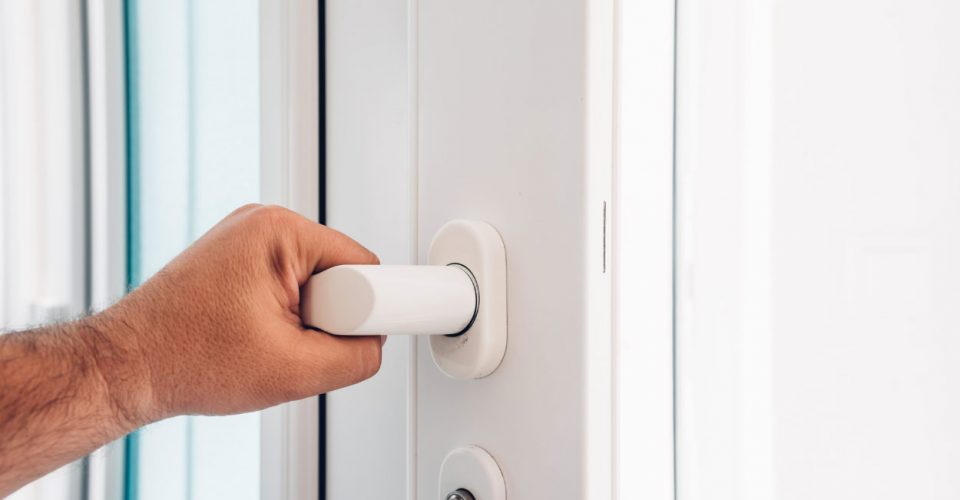How To Adjust A UPVC Door To Stop Draughts
Running into issues with your uPVC door? The problem may be with the hinges, or the door may need a simple adjustment. Common things that indicate an alignment issue with your door’s hinges include:
- A door that allows in draughts
- A door that is rattling
- A door that snags on the floor
- A door that sticks or becomes stuck

How to Adjust a uPVC Door
The good news is that adjusting your uPVC door requires minimal tools and only a little bit of knowledge. Here’s how to check your uPVC door’s alignment and adjust it in five simple steps.
Check Your Door’s Alignment.
Begin by fully closing your door and latching it. Then check the gaps around your door (including top, bottom, and sides), examining them to ensure they’re uniform. If they’re uneven gaps, this can indicate that your door is misaligned. You should also place a spirit level on your door’s top to see if it may be off-centre.
Determine That Your Door Isn’t Warped Or Damaged.
Once you’ve checked your door with a spirit level, you should also examine the door frame and hinges as well to see if they appear misaligned. It’s also a good idea to verify whether or not your door has expanded due to heat. Open and shut your door several times to test how well it is moving and latching.
Determine The Type Of Hinge You Have.
Depending on the uPVC door that you have, there can be a few different kinds of hinges. They are:
- T-hinges
- Butt hinges
- Flag hinges
If you’re not sure which kind of door hinge you have, you can easily compare pictures of them online to identify which you have.
Gather The Tools needed.
There are only a few tools that you need to adjust your door hinges, including:
- A flat-head screwdriver
- A Phillips head screwdriver
- Allen wrench (the right size will depend on the fittings used, bring a few different sizes and see which one fits).
Adjust Your Door Hinges.
Adjusting T-hinges or Flag Hinges
To adjust T-hinges or flag hinges, you should locate the lateral adjustment screw, which is sometimes hidden by a cap on the hinge. Loosen the two Phillips screws inside and then use your flat-head screwdriver to remove the cap. From here you can access the compression screws, however, do note that not every flag or t-hinge has these. Use an Allen wrench to loosen the hinge plate screws. Start with just one or two rotations, testing until you’ve found the optimal position.
Adjusting Butt Hinges
To adjust a butt hinge, begin by determining if there are two Phillips screws on the side of your hinge. If there are, use your Phillips screwdriver to turn either the bottom or top screw to get movement. From here, you can adjust your butt hinge up or down as needed with the adjustment located on the top with an Allen wrench. Remember to remove the cap to expose the screw head, as well as loosen the grub screw in the centre before adjusting.
Test The Door Again.
Once you’re finished adjusting your door, you should repeat the steps above and examine your door for gaps or draughts. Open and close it several times again and ensure it’s not snagging anywhere before putting your tools away. If you find you’re still having trouble with your door, it may be time to consider bringing in a professional.

